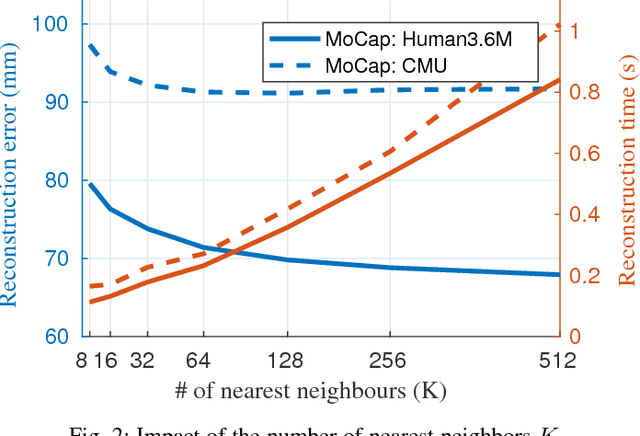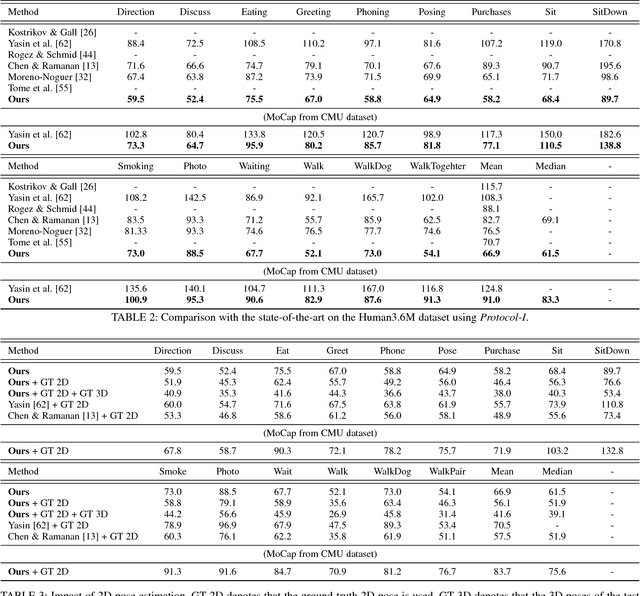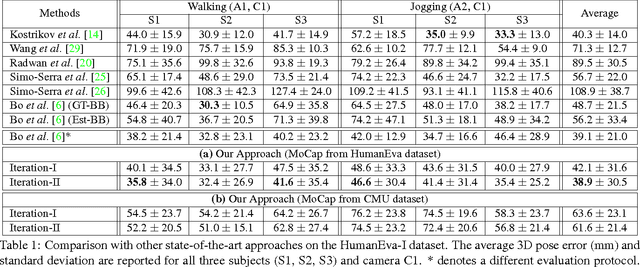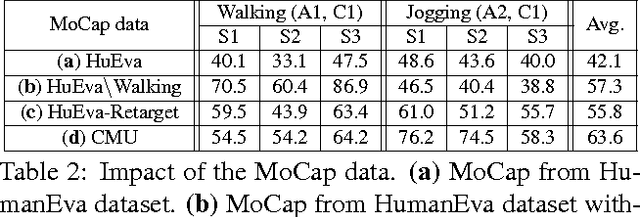Björn Krüger
A Dual-Source Approach for 3D Human Pose Estimation from a Single Image
Sep 06, 2017



Abstract:In this work we address the challenging problem of 3D human pose estimation from single images. Recent approaches learn deep neural networks to regress 3D pose directly from images. One major challenge for such methods, however, is the collection of training data. Specifically, collecting large amounts of training data containing unconstrained images annotated with accurate 3D poses is infeasible. We therefore propose to use two independent training sources. The first source consists of accurate 3D motion capture data, and the second source consists of unconstrained images with annotated 2D poses. To integrate both sources, we propose a dual-source approach that combines 2D pose estimation with efficient 3D pose retrieval. To this end, we first convert the motion capture data into a normalized 2D pose space, and separately learn a 2D pose estimation model from the image data. During inference, we estimate the 2D pose and efficiently retrieve the nearest 3D poses. We then jointly estimate a mapping from the 3D pose space to the image and reconstruct the 3D pose. We provide a comprehensive evaluation of the proposed method and experimentally demonstrate the effectiveness of our approach, even when the skeleton structures of the two sources differ substantially.
A Dual-Source Approach for 3D Pose Estimation from a Single Image
Mar 27, 2016



Abstract:One major challenge for 3D pose estimation from a single RGB image is the acquisition of sufficient training data. In particular, collecting large amounts of training data that contain unconstrained images and are annotated with accurate 3D poses is infeasible. We therefore propose to use two independent training sources. The first source consists of images with annotated 2D poses and the second source consists of accurate 3D motion capture data. To integrate both sources, we propose a dual-source approach that combines 2D pose estimation with efficient and robust 3D pose retrieval. In our experiments, we show that our approach achieves state-of-the-art results and is even competitive when the skeleton structure of the two sources differ substantially.
Efficient Unsupervised Temporal Segmentation of Motion Data
Oct 22, 2015



Abstract:We introduce a method for automated temporal segmentation of human motion data into distinct actions and compositing motion primitives based on self-similar structures in the motion sequence. We use neighbourhood graphs for the partitioning and the similarity information in the graph is further exploited to cluster the motion primitives into larger entities of semantic significance. The method requires no assumptions about the motion sequences at hand and no user interaction is required for the segmentation or clustering. In addition, we introduce a feature bundling preprocessing technique to make the segmentation more robust to noise, as well as a notion of motion symmetry for more refined primitive detection. We test our method on several sensor modalities, including markered and markerless motion capture as well as on electromyograph and accelerometer recordings. The results highlight our system's capabilities for both segmentation and for analysis of the finer structures of motion data, all in a completely unsupervised manner.
 Add to Chrome
Add to Chrome Add to Firefox
Add to Firefox Add to Edge
Add to Edge